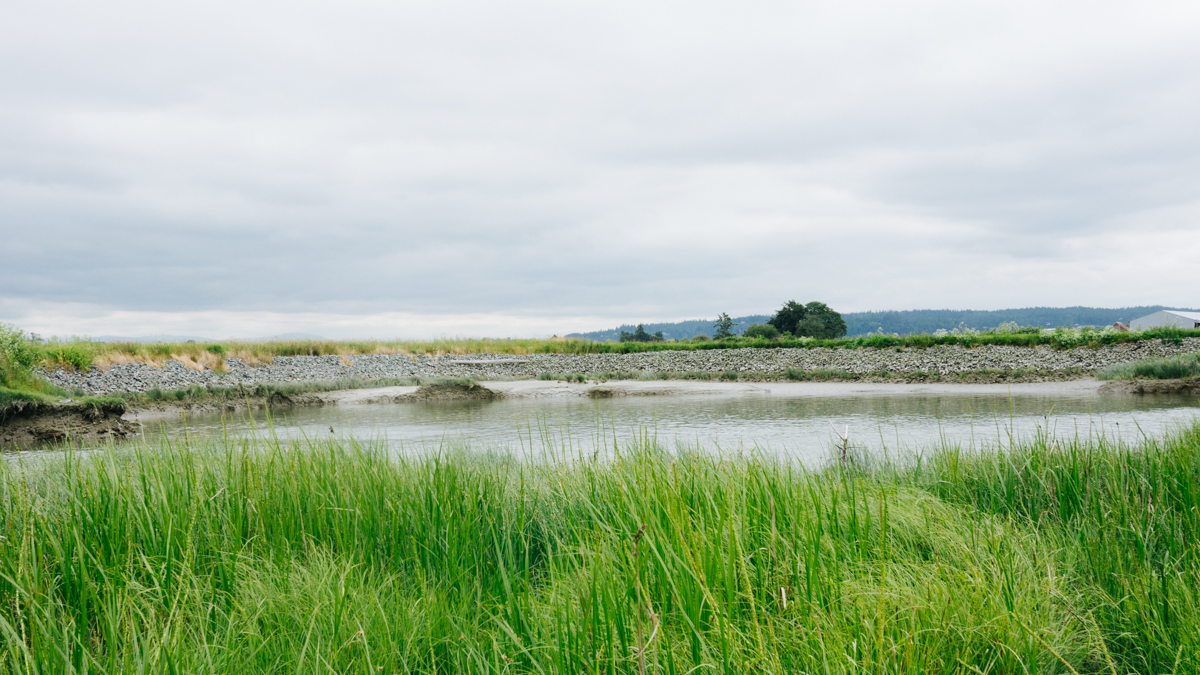By: Julie Morse, Project Ecologist
That’s a first. Trust me, I’ve attended a lot of conferences with Floodplain Managers, Biologists, Engineers, City Planners, etc… And I have NEVER seen this kind of inspirational language show up in the middle of a PowerPoint presentation. Presentations at these kinds of workshops are generally pretty dry - lots of numbers, graphs and figures. Sometimes the creative speakers will throw in a video or pretty pictures to keep people awake. But let’s be honest, these workshops are generally pretty dry with lots of “Blah, Blah, Blah…”
Yesterday was different.
Yesterday, The Nature Conservancy in Washington convened a workshop for people working in Puget Sound as part of our Floodplains by Design Partnership. Despite the fact that it was a beautiful June day and plenty of people were off of vacation, despite the fact that Seattle was experiencing one of its epic traffic days, despite the fact that there were other big meetings happening in the area, despite all that, more than 150 people showed up to hear what’s happening with Floodplains by Design.
Representatives from five Congressional offices and one U.S. Senator’s office. Staff from seven counties were there along with representatives from four of Puget Sound’s tribes. Farmers, businesses that work in flood plains and agencies came. What’s more - people even came from across the state (Yakima) and even out of state (Oregon) to hear what was happening in Puget Sound.
There was a buzz in the room, and with good reason. Among the successes we celebrated:
- In 2013, over $44 million in state legislative were appropriated for integrated floodplain projects
- This funding has helped catalyze 15 big projects – providing multiple benefits to a number of communities including reduced flood risks, restored salmon habitat, improved water quality, agricultural infrastructure upgrades and enhanced public access and recreational opportunities.
Colonel Estok, outgoing Seattle District Commander of the U.S. Army Corps of Engineers thanked everyone in the room for their efforts working collaboratively, and The Nature Conservancy for being the glue that pulls these different groups together. He reflected on three years of incredible progress.
But it was also time to look forward. Here are some huge opportunities for collaboration and getting Big Things Done in the coming year:
- A new capital budget request highlighting at least $50 million in compelling, ambitious, needed projects
- Potential ballot initiative to create an even larger, dedicated revenue source for multiple benefit floodplain projects
- Colonel John Buck was introduced as the new Seattle District Commander for the Army Corps of Engineers, an important partner in the FbD Partnership
The best presentation of the day was the last, given by our government relations director Mo McBroom. Through Mo’s talk I could see her spunky enthusiasm was going to battle with her more subdued professional side. Mo was clearly trying to contain her excitement about the potential for the legislature to help support, and be a leader nationally, in addressing water issues - whether it’s too much water (flooding), too little water (irrigation needs), or nowhere for the water to go (stormwater). I’m not sure trying to contain her enthusiasm was really working for her, in fact quite the opposite; I thought her enthusiasm was contagious.
Mo ended her presentation with reiterating the phrase of the day - Think BIG. Believe BIG. Act BIG. And the results will be BIG. There are BIG things happening in Puget Sound. Yesterday I felt incredibly proud to be part of it.
To hear more of what people are saying about Floodplains by Design, please visit our website – http://www.floodplainsbydesign.org/perspectives/




















